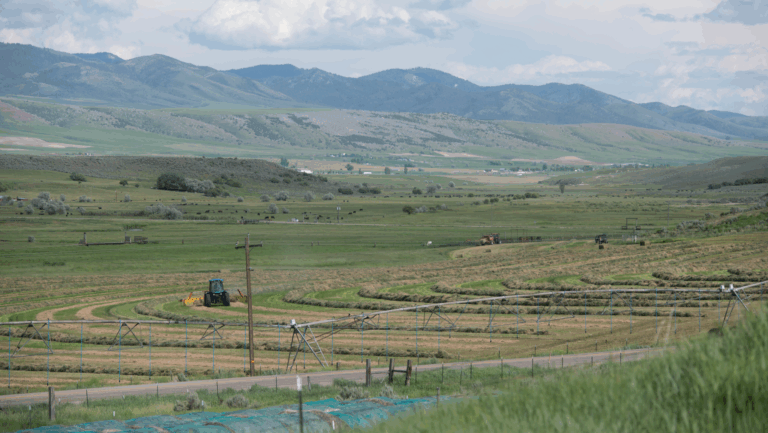Make the Most of Your Cattle Loan
When used wisely, real estate-backed cattle loans can be an effective way to boost operational liquidity and hedge against market fluctuations.
Amid rising inflation, American cattle ranchers must find a way to protect their operations against surging input costs. Three key expense increases that will impact cattle ranchers in 2022 include feed, fertilizer, and labor. According to the USDA 2022 Farm Sector Income Forecast:
- Feed expenses are expected to increase by 6.1 percent due to rising commodity prices.
- Fertilizer-lime-soil conditioner is projected to increase by 12 percent.
- Labor is expected to increase by 5.9 percent.
The increase in commodity prices is due to a combination of external economic and geopolitical events. The Russian invasion of Ukraine has led to even higher fuel and fertilizer costs than what was predicted in 2022’s first quarter USDA farm income forecast.
One of the legislative decisions causing concern for livestock producers is the temporary lift on the E15 sales ban for the summer of 2022. E15 is a biofuel comprised of ethanol derived from corn and gasoline. Due to an increase in demand for corn, prices will likely rise, translating to higher feed costs for the producers that purchase corn rather than sell it.
While meat prices continue to climb for consumers, higher input costs and meat processing monopolies are preventing cattle ranchers from seeing these profits. Supply chain disruptions from COVID-19 highlighted the need for transparency and accountability in the processing sector for cattle ranchers, motivating lawmakers to prioritize proposed legislation to address concerns.
Managing your working capital and seeking ways to reduce your input costs can help protect your profit margins as a cattle rancher. To help you get started, here are three ways you can leverage your land equity to secure an operating loan for your cattle ranch and set it up for long-term success.
1. Use Cattle Loans to Increase Cash Flow
Many land loans for cattle are used to provide additional working capital on hand for inputs such as feed, fuel, and labor. Then, once you’re ready to grow, working capital can also help fund expansion and improvements.
Examples of AgAmerica’s working capital loans include:
Ranchers Upgrade Operation with $2.3MM RLOC
When ready to take the next step, these Texas ranchers used real estate-backed financing to secure a revolving line of credit with interest-only payments for five years. From this, they were able to upgrade their operation, increase cash flow, and invest back into their ranch.
2. Use Cattle Loans to Optimize Operation and Reduce Input Costs
One of the leading ways to upgrade your operation and improve efficiency is through precision ag technology. According to the USDA’s farm income outlook for 2022, farm labor expenses are expected to experience the third-highest increase at 5.9 percent, with hired labor accounting for $33 million or eight percent of production expenses. As a result, ag tech can be a strong solution to reducing labor costs and addressing the farm labor shortage.
A flexible operating line of credit backed by land equity can help you increase the efficiency of your operation by controlling more of the factors of production through vertical integration. For instance, growing your own feed can reduce the cost while securing additional revenue.
Colorado Ranchers Increase Working Capital with Refinance
When faced with ballooning debt payments, two ranchers turned to AgAmerica to consolidate existing debt and increase their working capital. Their interest-only $19.1MM debt consolidation land loan helped them pay down existing debt while equipping them with capital for operational expenses and future investments.
3. Use Cattle Loans to Invest in Regenerative Ranching Practices
The adoption of climate-smart ranching practices is gaining increasing momentum as more and more ranchers are seeing their economic and environmental benefits.
Rotational Grazing
In addition to being an effective tool in the fight against climate change, rotational grazing is a beneficial practice to improve soil health on your land. By improving both soil health and carbon sequestration potential, rotational grazing helps reduce fertilizer input. And by growing your own feed, you are able to reduce your reliance on suppliers and the fluctuations of the commodity markets.
Anaerobic Digestion
Through the process of anaerobic digestion, methane from cattle byproducts can be converted to a renewable energy called biogas. Not only does this contribute to environmental benefits, but it also yields additional revenue streams. By selling biogas to energy companies, cattle ranchers are able to secure additional income from a byproduct that occurs naturally. For example, in Pennsylvania, a dairy farmer calculated that their biodigester grosses approximately $500K per year in revenue and savings.
Landowners Secure Custom Land Loan Package to Support Conservation Efforts
Texas borrowers were interested in increasing their conservation efforts by tapping into the carbon market. They turned to AgAmerica for a custom land loan package that totaled nearly $45MM. By securing additional working capital through the equity of their land, they were able to engage in environmental stewardship and acquire additional revenue streams.
Boost Cash Flow with AgAmerica’s Real Estate-Backed Cattle Loans
AgAmerica has a unique understanding of agriculture and the current challenges American cattle ranchers face. Our cattle ranch loans are customized to help you make the most of your land equity and boost operational liquidity. From our flexible 10-year RLOC to our short-term, interest-only loans, we have a variety of customizable rural land financing options that can help you thrive amid an economic storm and be adjusted as needed to keep you leveling up.
Boost your operational liquidity with AgAmerica’s flexible spectrum of farm land loans for cattle.






